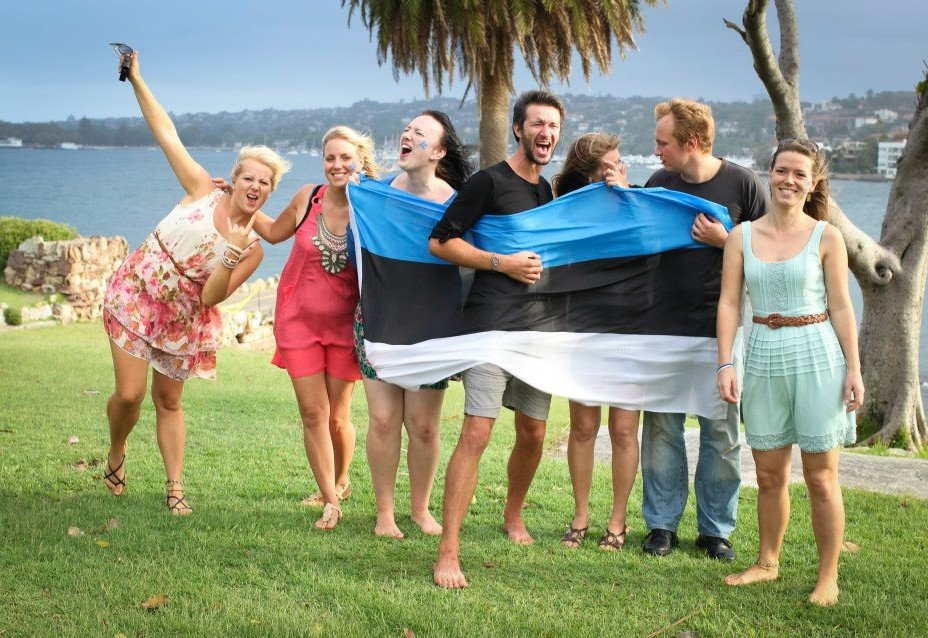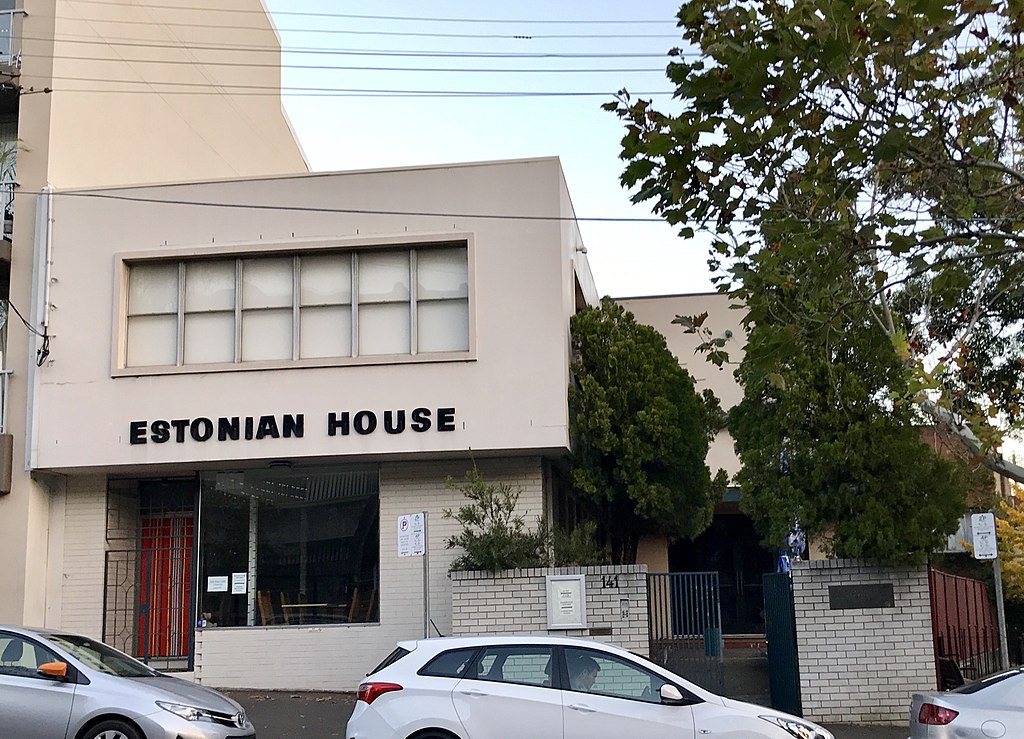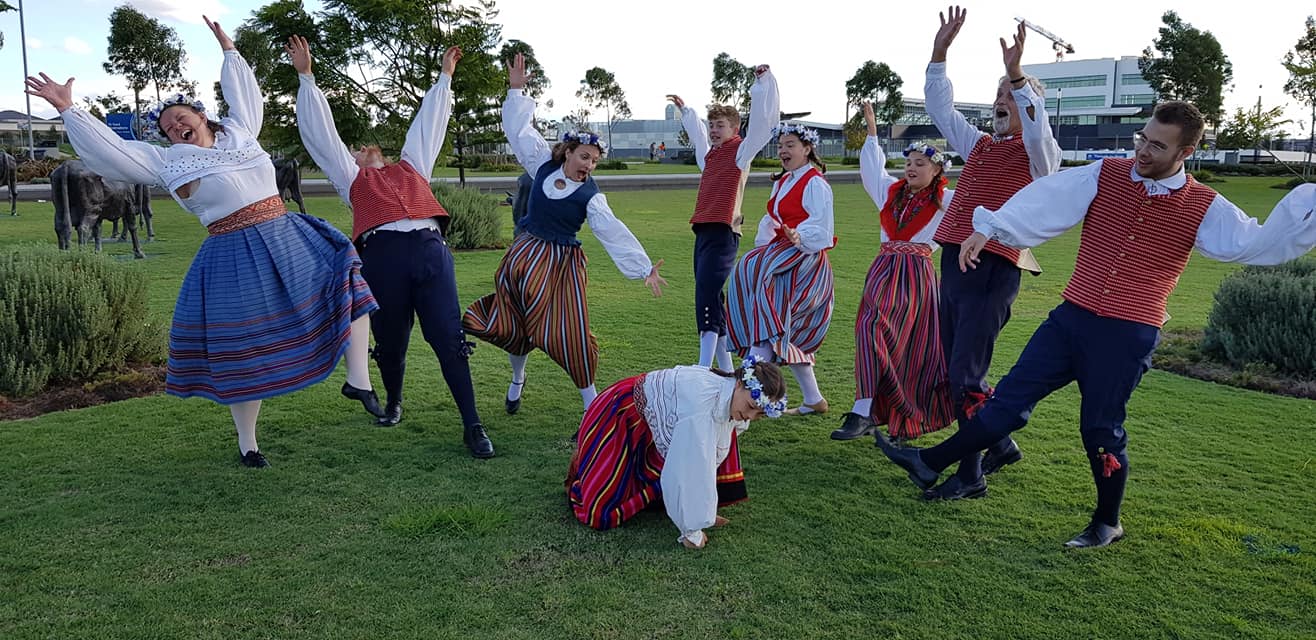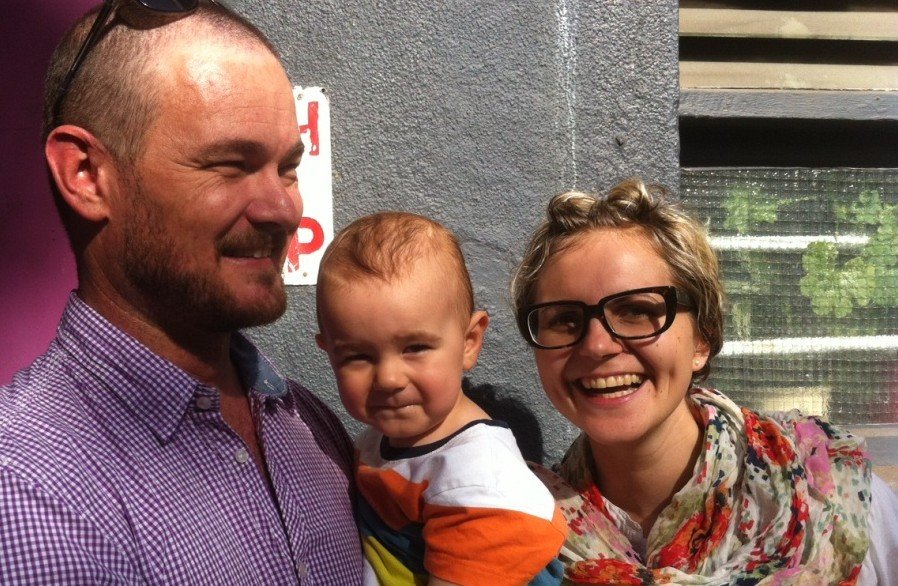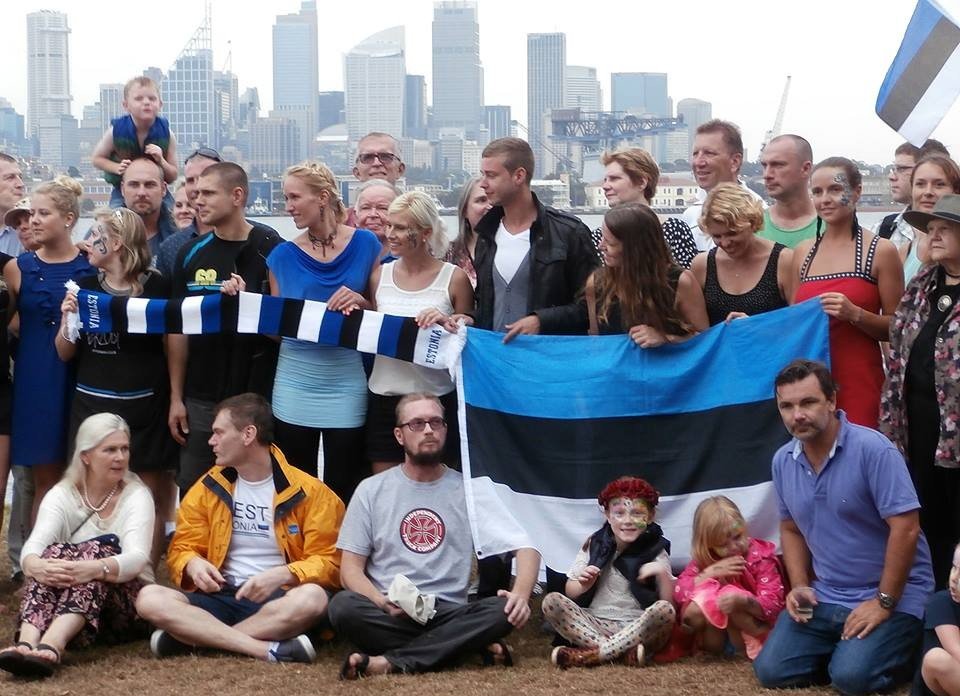Australia hosts the fifth largest Estonian community in the world. Among the Estonians currently living in Australia, the Sydney community is the liveliest one.
The first Estonians settled in Australia in 1853, and the first Estonian society was established in Melbourne in 1914. During the course of the Second World War, Australia became one of the most important destinations for Estonians looking abroad for safety. In the autumn of 1944, just before the second Soviet occupation, approximately 70,000 Estonians fled the country – first to Germany and Sweden, and subsequently to the US, Canada, the UK and Australia. Around 7,000 Estonians ended up “Down Under”.
Estonian houses were set up in Sydney, Thirlmere, Melbourne, Adelaide and Perth. Estonians, known for their protestant work ethic, generally thrived in the country. Some, such as Sir Arvi Parbo (so far the only Estonian to be honoured with this title), flew very high, becoming, at various times, a chairman of the three largest companies in Australia, retiring in 1992 as the chairman of what is now BHP Billiton – the largest mining company in the world.
Arvo Pärt, although he has never resided in Australia, is an honorary doctor of Sydney University. Arvo Volmer has been the principal conductor of the Adelaide Symphony Orchestra since 2004.
During the Soviet occupation, only a very few lucky ones left behind the Iron Curtain to visit their relatives in Australia. Since the restoration of Estonia’s independence in 1991, and re-accession to the Western world, however, more and more young people have ventured out and taken advantage of the Australian working holiday visa program that Estonia agreed upon in 2005. Many work and live in Australia for a couple of years, and return to their home country, but some opt to stay and even set up their own companies.
The Estonian community in Australia is now one of the largest abroad – along with those in Finland, Sweden, Canada, the US and the UK. No one knows the exact number, but it is estimated that approximately 10,000 Estonians live there. The “Estonians in Australia” Facebook group alone has over 17,000 members – although not all of the members actually live in the country anymore.
The young Estonians who have settled in a new country, cite the positive and adventurous Australian spirit, good quality of life and financial and professional opportunities as the reasons for staying.
Keeping the Estonian flame high in Sydney
Sydney boasts the liveliest and biggest Australian Estonian community in Australia. The community is lucky to have a conveniently positioned Estonian House that is right next to the city centre. Having undergone some renovations, the Estonian Cultural Centre looks more inviting and modern than it has in many years.
Like in many Estonian communities around the world, the national identity and traditions are kept alive by singing and dancing.
Every Monday the singing group Lõke and folk dancers Virmalised meet to practice. The ultimate aim – the cherry on the cake, if you like – is for the singers to make it to the next Song Celebration in Tallinn.
On Thursdays, the female choir Heli gathers to practice, and every Thursday night Eesti Klubi or the Estonian Club opens its doors. Eesti Klubi is a social event where every time a different Estonian meal is on the menu and Estonian drinks are available from the bar. Often the most recent arrivals fresh from Estonia can be found here, sitting side by side with the old timers – some of them third generation Sydney Estonians. Every last Sunday of the month the same E-Klubi organises a market where different Estonian products from jars of soup to black bread are for sale.
The Estonian House is also the place for major yearly celebrations like those for the Independence Day, Mothers Day, the Day of Restoration of Independence and Christmas, to name a few. And among some of the long-running organisations that also regularly meet at the Estonian House are the Art and Craft Society, the Seniors’ Club and the War Veterans.
The Australian Estonian Archives, that would be the first and main destination for anything related to the history of Estonians in Australia, can also be found here. The archives are open on Wednesdays.
Every week, for the last 65 years, the Australian Estonians’ newspaper Meie Kodu has been published from the Estonian House.
Movie nights
On the last Friday of every month, the Sydney Estonian House opens its doors for movie nights. It is a relaxed club-style setting for watching Estonian feature films and documentaries while very affordable Estonian food and drink is on the menu.
One of the aims of the organisers, Leen and Siimon Rampe, has been to attract the wider Australian audience to these film nights. Luckily this aim is gaining momentum due to the very convenient location of the Estonian House as well as some well-positioned film posters in front of it.
The Estonian House is also the place to go to whenever guests from Estonia arrive. In 2013, the Estonian Philharmonic Choir and conductor Tõnu Kaljuste were invited to perform Arvo Pärt’s music at the Sydney Opera House. They also met with local Estonians beforehand and gave them a mini-concert. The Estonian House has greeted a long list of visiting musical and theatrical groups over the years.
In addition to meeting up in person at the Estonian House, the Sydney and Australian Estonians also refer to their online meeting place called “Estonians in Australia” where info about coming events and articles of their experiences gets published.
Own slot at the Australian public broadcasting
In a multicultural society such as Australia, Estonians have even been allocated their own slot on SBS – the multilingual radio station owned by the Australian public broadcasting. Every Friday, Australian Estonians tune their radios to the Special Broadcasting Service’s or SBS’s radio station to listen to the weekly Estonian radio programme. It is one of the 74 different language programmes being aired every week on SBS.
Every second week, the young generation of the Sydney Estonians meet at the Estonian Church hall for a session of songs, dances and activities – all in Estonian. Mudila was established by active parents who saw the need for such a gathering and boasts already over 15 families as its members. The younger generation has also started a tradition of celebrating the Estonian Independence Day at Clark Island.
Sydney is also the home to the Consulate General of Estonia, making it so much easier for Australian Estonians to apply for passports and other documents that one needs when leading this globally dual-home country life. Neither country has a resident ambassador; in addition to the Consul-General in Sydney, Estonia has two honorary consulates – one in Perth and another one in Brisbane. Australia is represented in Estonia through its embassy in Stockholm and through an honorary consulate in Tallinn.
As can be seen then, Sydney is a home to a great variety of Estonians – from backpackers to the third generation Australian-born enthusiasts who, despite their weakening links with the Estonian language, participate in and contribute to the vibrant community life.
I
Cover photo: Estonians celebrating at Shark Island, Sydney. Credit: www.nansiphotography.com. Additional reporting by Silver Tambur and Tiina Tamm. This article was lightly edited on 6 August 2019.

